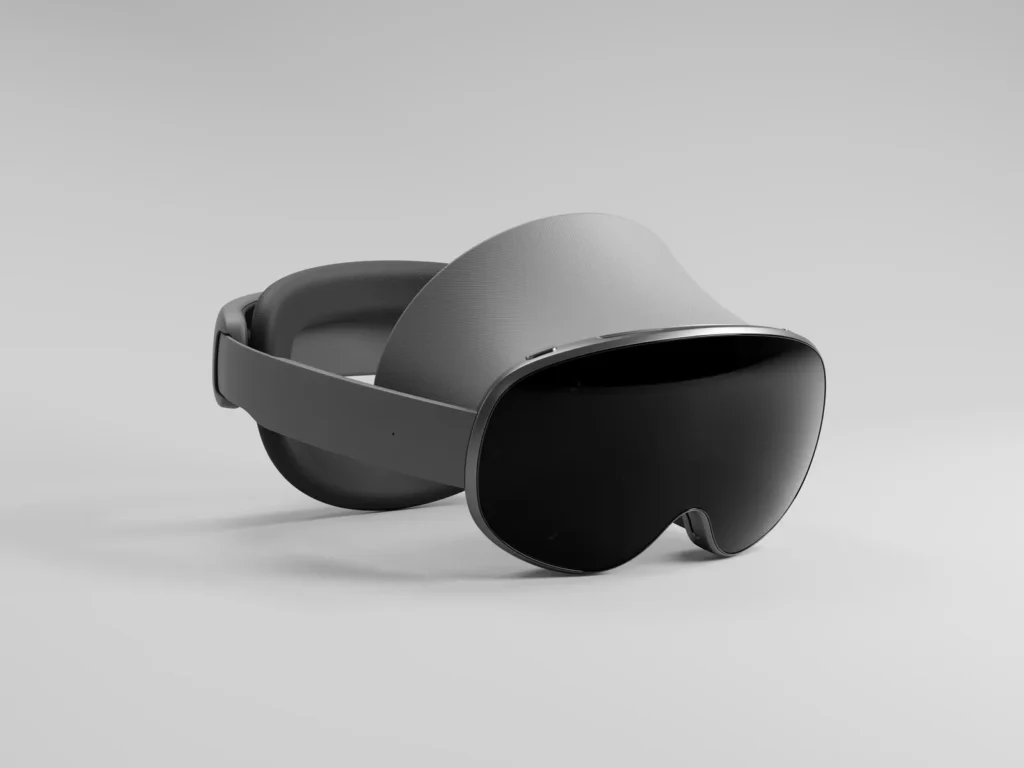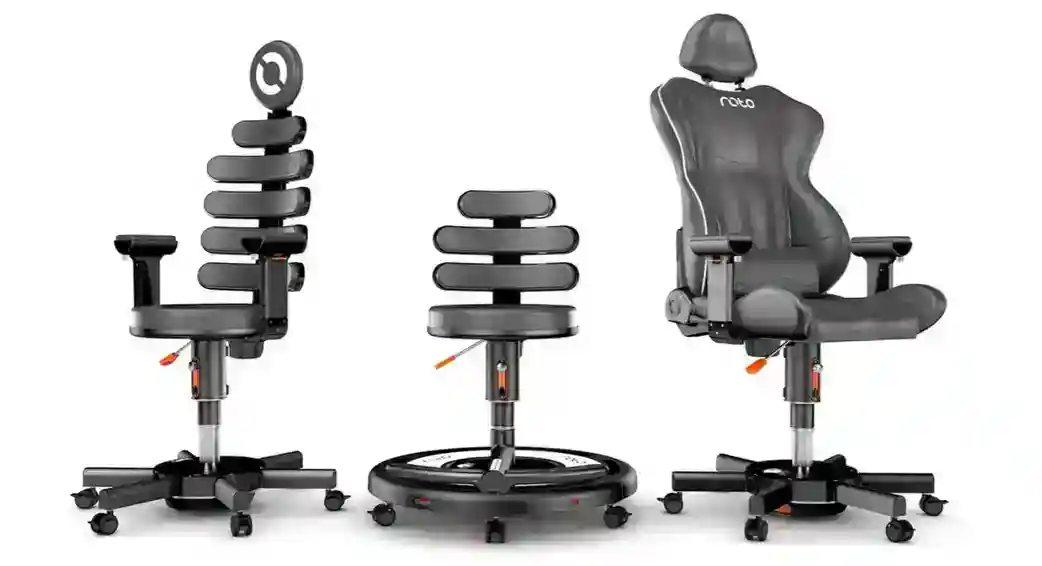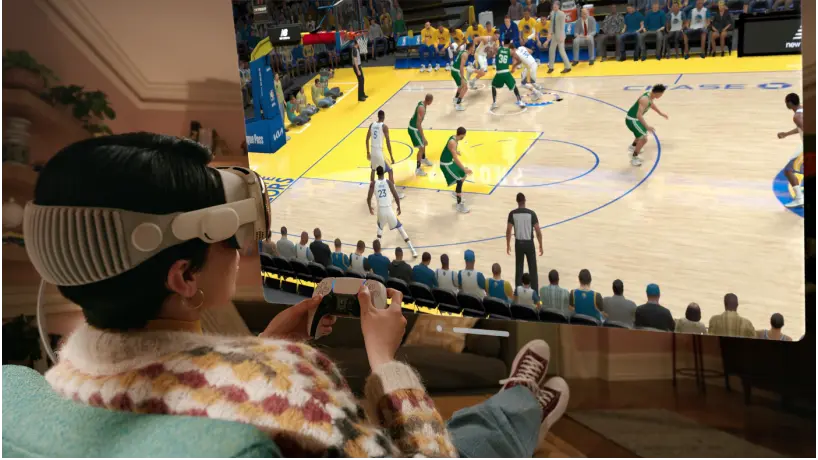Android XR, the new platform developed by Google in collaboration with Samsung and Qualcomm is set to significantly reshape how we interact with technology and information, moving beyond the limitations of traditional screens and offering a more intuitive, immersive, and seamless user experience.

This platform wants to make XR an everyday thing and not just a tool or toy that you play with. It aims to be an extension of our natural environment with assistance from Gemini AI, It has the potential to transform how we access information, perform daily tasks, and experience our world.
What is Android XR?
Android XR is an OS (operating system) designed for XR (extended reality, an umbrella term that encompasses both augmented reality (AR) and virtual reality (VR)). It is built from the ground up to leverage multimodal AI (artificial intelligence that can different types of inputs) thus enabling devices to understand and respond to interactions through voice, hands, and eyes. This shift represents a move away from traditional input methods, such as keyboards and touchscreens, towards more 3D and naturally intuitive forms of interaction. This platform is an amalgamation of various technologies, such as artificial intelligence (AI), and augmented reality (AR), some of which have yet to reach their saturation point so possibilities are endless.
But mistake not, The Android XR platform is not just another operating system, it’s a comprehensive approach to integrating XR into our daily life, as Google’s commitment to building this platform in partnership with Samsung and Qualcomm signifies a major push towards making XR mainstream. The initial focus is on headsets, but the long-term vision includes all-day wearable glasses.
Key Features of Android XR
Natural and Intuitive Interaction
One of the most significant features of Android XR is its natural user interface. It extends beyond traditional input methods and allows users to interact with technology using their voice, hands, and eyes. This is possible due to Gemini, which processes user requests in a conversational manner, this means that you can simply talk to your device as if you were speaking to a person.
Are we heading to a Blade Runner-like world?
Real-Time Information and Assistance
The Android XR can provide real-time information and assistance based on what the user is seeing and doing. However, it requires you to enable Gemini AI for these:

- Instant language Translation: allowing users to understand and communicate in different languages. Incredible for people who travel to different countries with different languages.
- Real-time directions: Through Google Maps (embedded directly into the glasses), you can make navigation safer and easier.
- Identification of objects: When asked provide details about art, architecture, or even everyday items. (Quite useful and kind of scary)
- Guidance for tasks: It can guide or instruct you for functions such as cooking, home decoration, etc.
- Contextual awareness: It anticipates user needs based on user data.
Seamless Integration of 2D and 3D
Android XR is designed to integrate familiar 2D Android apps as spatial windows that users can easily move and resize (is this the end of ultra-wide multi-monitor setups). This feature enables the user to access their existing application in an XR environment without additional effort. Users can have multiple apps open at the same time, interacting with them as if they were physical objects in the real world (described by a few lucky users). This seamless integration of 2D and 3D content allows users to :
- Access information and tools from familiar apps.
- Engage with an immersive 3D environment simultaneously.
- Manage multiple tasks and workflows in a spatial environment.
Immersive Experiences
The platform hopes to provide a range of immersive experiences that could transform how people consume content. These experiences could be something like this :

- Exploring the world in 3D with Google Maps, allowing users to visit distant places and landmarks from the comfort of their own homes.
- Reliving memories through spatialized photos and videos creates the feeling of stepping back in time.
- Experiencing entertainment with spatial audio and immersive video formats in YouTube and Google TV breaking content outside the traditional rectangle.
Enhanced Productivity
By providing a large and unbounded workspace through Chrome, Android XR allows users to be more productive. The ability to multitask and interact with multiple apps in a spatial environment enhances workflows. With the integration of Google apps like Gmail and Calendar, professionals can engage with their work in a new way, making work more efficient and seamless.
Learning and Exploration
Android XR offers new possibilities for learning and exploration. For instance:
- Users can virtually visit places they wish to see, gaining access to art, architecture, and local history.
- They can explore maps in stunning 3D from a whole new perspective.
- Real-time translation capabilities make exploring new environments easier.
- Information about objects and places is readily accessible, fostering a deeper understanding of the world.
Personalized and Contextual AI
Gemini is at the heart of Android XR, understanding user context and providing relevant responses. This personalized and context-aware approach makes technology more responsive and intuitive, anticipating and fulfilling user needs. The AI capabilities can reason across real-time spaces, offering helpful advice in situations where the user needs assistance.
All-Day Wearable Devices
The long-term goal for Android XR includes the development of lightweight, comfortable glasses that can be worn all day. This would make access to information and assistance continuously available, transforming daily life into a more digitally augmented experience.
Accessibility and Affordability
The future adoption of Android XR will be heavily influenced by its accessibility and affordability. The platform is built on the foundations of the Android operating system, which is already used by billions of people worldwide. This familiarity will make the transition easier for new users. Google also aims to make the platform accessible for developers using familiar tools like Android Studio and Unity.
The Android XR platform aims to make XR technology more accessible, addressing many of the barriers that currently limit adoption.
Familiarity to Users
The operating system is built on the foundation of the Android OS, which is already used by billions of people. This reduces the learning curve for new users.
Developer Accessibility
The platform uses familiar tools and frameworks like Android Studio and Unity. Opening the Play Store to XR makes it easier for developers to distribute their applications, promoting the growth of the platform.
Hardware Accessibility
Android XR is designed for both headsets and glasses, catering to different user needs and preferences. Lightweight and comfortable glasses are being designed for all-day wear, making the technology more accessible for everyday use.
Real-Time Translation
Features like real-time language translation make the technology more useful for a wider range of people by removing language barriers.
Affordability
The partnership with Samsung and Qualcomm suggests an effort to develop devices at different price points. The focus on Android suggests a cost-effective approach, making devices more affordable than some competing XR technology. The availability of an Android XR emulator enables more developers and users to engage with the technology regardless of access to physical hardware.
Competition
The entrance of Android XR into the market will increase competition, potentially leading to more affordable devices and faster innovation. Companies like Samsung, Sony, and Lynx are developing Android XR devices, which will foster innovation and give consumers more options.
Impact on Future Adoption
The accessibility and affordability of Android XR is supposed to significantly impact its adoption rate. The fact that familiar apps will be available on the new platform from day one is a key advantage. This seamless transition will allow for smoother adoption of the technology and make it a practical choice for a wide range of users. If the platform is priced competitively and offers a wide range of useful applications, adoption could be rapid.
Android XR: A Closer Look
Headsets
The initial launch of Android XR focuses on headsets, which are seen as a great entry point for the platform. These headsets will be able to run many familiar Google apps, such as YouTube and Google TV, on a large virtual screen, enabling users to enjoy a fully immersive experience. The first device designed for Android XR, code-named Project Moohan (meaning “Infinity” in Korean), is being built by Samsung and is expected to launch this year.

The Samsung headset combines elements of existing headsets like the Apple Vision Pro, Quest Pro, and the Quest Elite, and it will include a rigid strap for added comfort. While the headset will use the Snapdragon XR2+ Gen 2 processor, a more powerful version than that used in the Quest 3, some reviewers have noted a less wide field of view.
Glasses

The long-term vision for Android XR includes glasses that can be worn all day, enabling constant access to information and assistance. The glasses are designed to be lightweight and comfortable for continuous wear. The glasses will have the capability to provide real-time information and translate languages, turning the world into an interactive landscape.
User Interface
The user interface of Android XR is very similar to that of Android and other spatial operating systems like Apple’s Vision OS. Users can interact with applications as 2D windows in the XR environment, moving, resizing, and multitasking just as they would on a phone or tablet. The interface also includes controls for managing notifications, settings, and pass-through viewing. Users can suspend apps and switch between apps in a multitasking view.
The emulator for the Android XR platform shows an interface that is user-friendly and familiar for those who use Android devices. It allows users to interact with the system through hand tracking, and it includes features like a quick access menu for controlling settings like internet, Bluetooth, boundary systems, and pass-through toggles. The emulator also highlights the ability to create areas within the virtual environment to interact with a mouse and keyboard.
The Potential Impact
Transforming Work and Collaboration
The Android XR platform offers new opportunities for collaboration and productivity. With an unlimited workspace offered by Chrome, users can work more efficiently and engage with multiple apps simultaneously. The ability to share the same digital space will also provide new ways to work and collaborate with others.

Enhancing Education
Android XR has the potential to transform education by providing immersive learning experiences. Students could visit historical sites virtually, explore the human body in 3D, and interact with educational content in new and engaging ways.
Reshaping Travel and Navigation

With real-time translation and navigation, Android XR will empower users to travel more confidently, even to places where they do not speak the local language. The ability to see directions and information in the user’s field of view means that they don’t have to pull out their phones to check maps.
Blending Memories and Reality
The platform can make photos and videos into spatialized memories, allowing users to step back in time and relive past moments. This capability adds a new layer of connection and sentiment to personal media.
The Future of Android XR
Android XR is more than just a new technology; it’s a glimpse into the future of how humans will interact with technology. The amalgamation of AI, AR, and other technologies positions the platform to become a key player in the XR space. While the initial launch focuses on headsets, the long-term vision of all-day wearable glasses means that we could be witnessing the birth of a technology that will fundamentally alter how we experience the world around us. As the platform matures and more developers create content for it, the potential of Android XR will continue to grow, offering new and exciting ways to work, learn, play, and connect with the world around us.
In conclusion, Android XR is set to transform daily life, offering more natural, intuitive, and immersive ways to interact with technology and information. Its focus on accessibility, affordability, and collaboration with key industry partners positions it as a significant force in the rapidly evolving world of extended reality.
What is Augmented Reality (AR)?
Augmented Reality (AR) is an experience or a medium through which we can bring and interact with our imagination ( content created with computer-like characters, objects, etc) in the real world.
When will Samsung launch its Headset?
Samsung won’t release the XR headset until the latter part of 2025 or it may take up to 2026. Although the company has been continuously working on the capabilities and functioning of the headset.








1 thought on “Teamed up on Android XR Google and Samsung aims to catapult extended reality (XR) into the mainstream spotlight.”